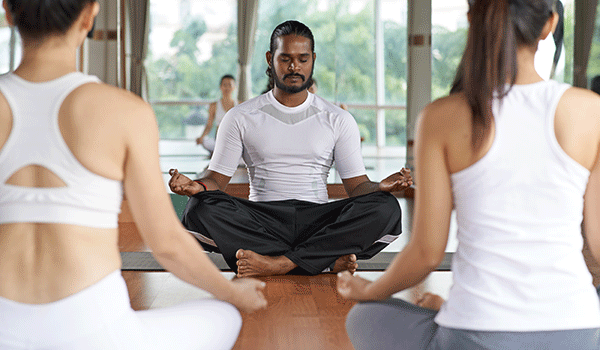
People are always searching for ways to connect with their inner self. The distinctive features that make a person unique and shine, are brought out by cracking the delicate code of harmony between their body, mind, and emotions. Yoga is one such ancient practice that has stood the trials of time and teaches the subtle art of being in control of your body and helps you sustain in sync with the outside environment. Yoga lays down simple principles that you could adopt to bring a sense of command over your internal conflicts, thus leading you to a more peaceful life and organized. The cornerstone of Yoga is discipline.
All the scriptures and teachings of Yoga are related to how a person can pursue healthy living through discipline. You need to have an insight into your strengths and weaknesses and work towards tackling them in the right way.
A brief history of Yoga
Yoga teachers or ‘Gurus’ explain that Yoga is as old as human civilization. Yogic fables and lores portray the God ‘Shiva’ as the Adiyogi or first guru (teacher).
Stories that have been passed down generations and interpretations from old writings suggest that Shiva taught this sacred knowledge to the prolific Saptarishis, the seven sages, on the banks of a lake in the Himalayas. These sages imbibed the teachings and spread the word throughout the world, thus Yoga reached many people. It became very prevalent in India. Several fossil remains of Yogic motifs and figures found at archaeological sites are testament to that.
Yoga shot into importance between the years 500 BC to 850 AD and then it became quite popular in the following generations. It’s regaining momentum as a tried and tested method of mindfulness in recent years.
‘Yoga’ is derived from the Sanskrit word ‘Yuj or Yog’ which loosely translates to join/ unite. It’s a perfect description of the ideologies behind the teachings which include the union between mind, body, and nature. It is also inclusive to every man, irrespective of his religion and beliefs. This means that Yoga practices can be followed by anyone, they only need to have the dedication!
The fundamental practice of Yoga involves a mixture of physical postures (asanas), breathing exercises, and meditation or relaxation techniques. This involves various aspects of the body that aids in improving inner strength.
A few health benefits of Yoga
It is no secret that Yoga is now being used as a complementary management method for various illnesses. A lot of schools and centers that deal exclusively with the study and science of these methods have sprung up.
It has been found that Yoga practices:
- Increase flexibility of the body and enhance energy levels
- Are useful in bringing stressful or anxiety-inducing situations under control, like the breathing exercises
- Can be employed as adjuvant behavioral therapy for smoking cessation and in other rehabilitation programs
- Helps to maintain a grip over your emotions and guides you to a purposeful and content life
- Can be included as a part of exercise required to control weight, especially in those with heart-related diseases.
How to incorporate Yoga into your schedule
- Pick and choose a well-established teacher who understands your requirements.
- Fix a time during the day, when you’re absolutely in the zone to practice Yoga. Try to stick to that schedule.
- Find others who are on the same journey. Having people to share the ups and downs will be useful to keep up with the sessions and motivate you.
- After you’ve taken a few sessions, evaluate the benefits, improvements, and drawbacks. Find out what works for you and what doesn’t and reorganize accordingly.
Before you begin
- Be aware of your strengths and limitations. A certain degree of caution is warranted before attempting any difficult postures because trying complicated ones may bring about muscle strain and sprain. And we don’t want that! Let your Guru know about any health conditions or difficulties that you have so that they can guide you likewise.
- Arrange your sessions in a quiet and calm environment where you can focus on the instructions and follow in peace.
- Your comfort and confidence are of utmost importance. Don’t take it as a tedious task, following which the whole purpose of the exercise would be lost!
- Ensure that you have a non-slippery Yoga mat and maintain adequate hydration. Don’t forget to warm up!
This was a quick round-up of the well-known and intriguing concept of Yoga and its importance in daily life.

